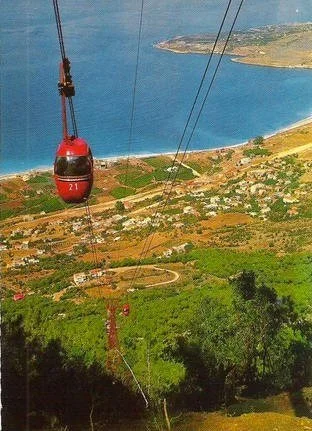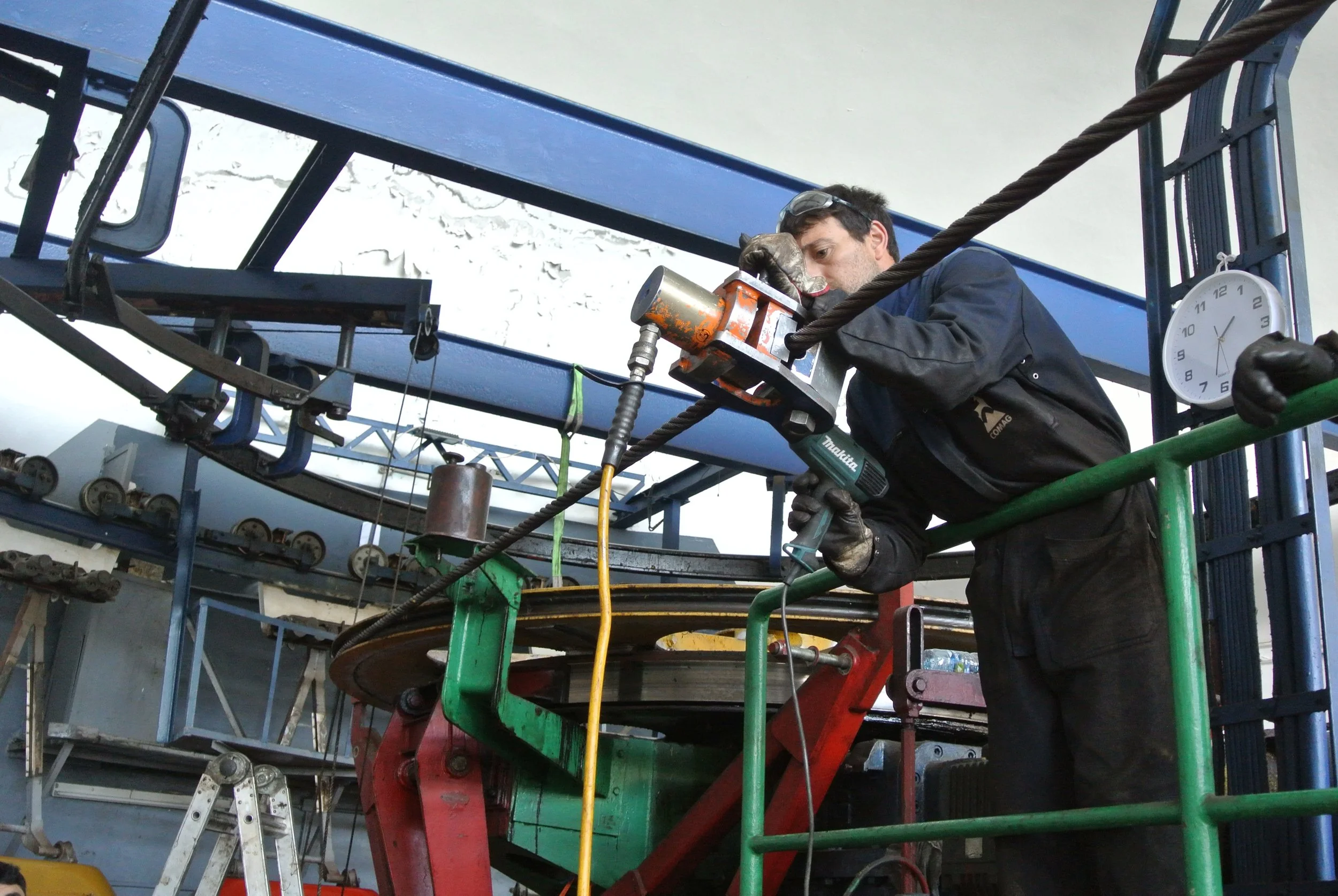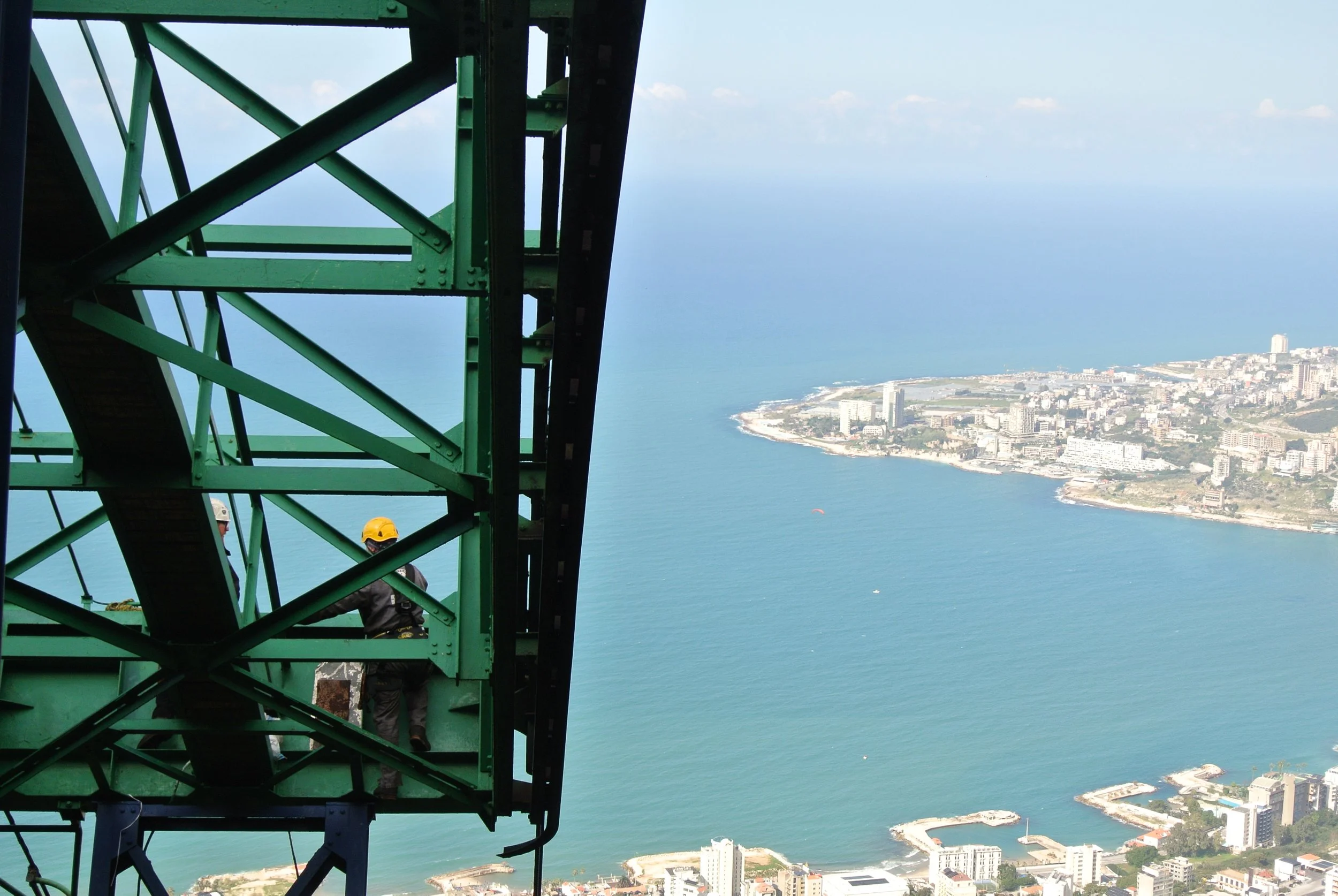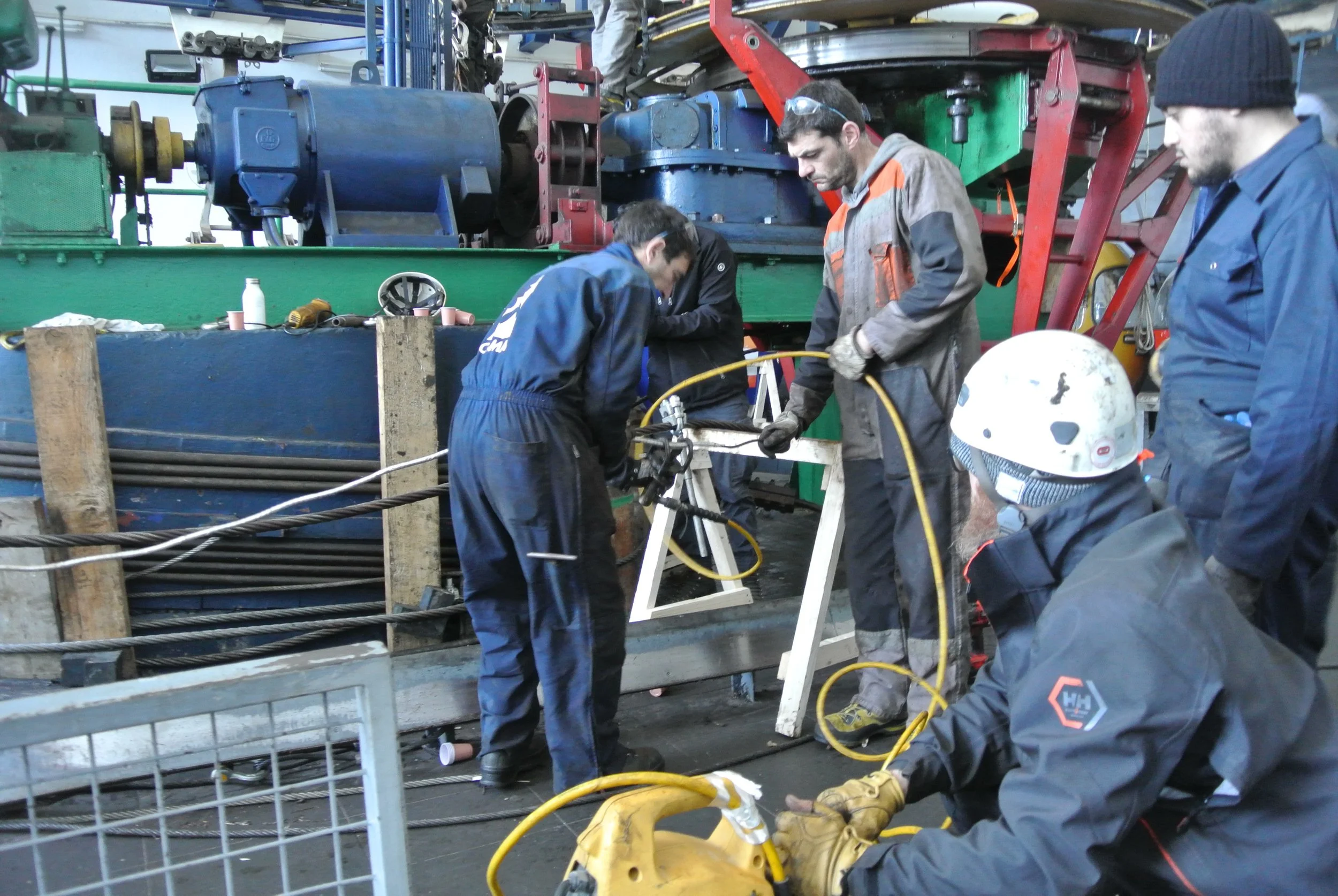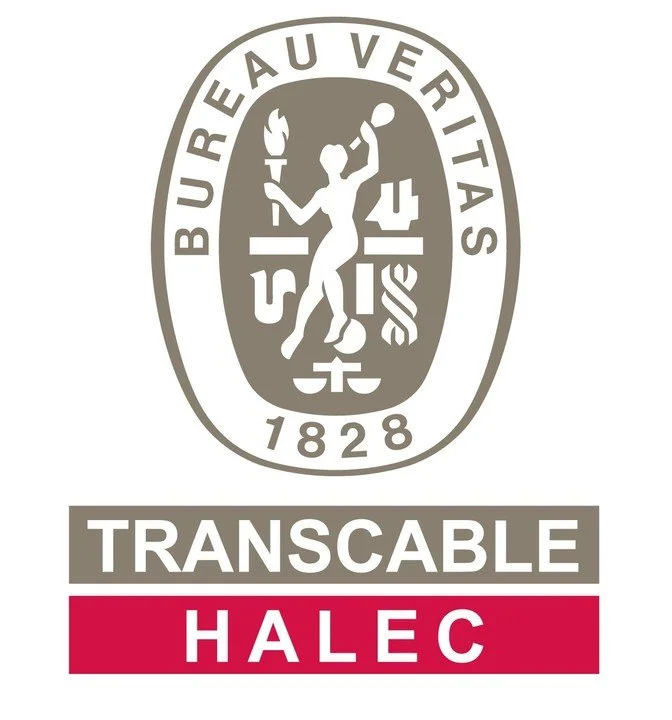The Teleferique—Lebanon’s iconic cable car—has a story that combines innovation, tourism, and spirituality, making it one of the country’s most enduring landmarks. Conceived in the early 1960s and inspired by European alpine cable cars, the goal was to connect Jounieh’s coast to Our Lady of Lebanon in Harissa, one of the most important pilgrimage sites in the region.
The concept was nicknamed “a train in the air” and required political and religious support to succeed.
It has become a cultural time capsule, linking generations of Lebanese and visitors alike who value views of the forest and the scenic bay of Jounieh, heritage of the years gone by, and faith when visiting the Sanctuary of Our Lady of Lebanon.
A ‘Train in the Air’…
Built to Last: Solid Build & World-Class Maintenance
The Jounieh Teleferique is more than just a scenic ride — it’s a precision-engineered transport system built for safety, stability, and long-term performance.
Designed and constructed by the German company Pohlig, a pioneer in cable car technology, the Teleferique operates on an S2 bi-cable system. This means it uses two separate cables: a support cable (câble porteur) to carry the cabins and a haul cable (câble tracteur) to move them. This dual-cable configuration provides exceptional stability and safety, especially on steep slopes and in variable weather conditions.
With its solid German engineering and proven design, the Jounieh Teleferique continues to offer not only breathtaking views — but also the reassurance of a robust, reliable, and professionally built system.
Its reliability is continuously upheld through rigorous inspections and repairs, overseen by industry-leading experts. Key figures and institutions involved include Bernard Halec, Transcable Halec, Halec Bureau Veritas, and ICC (Inspection, Câbles et Conseils) — all of whom bring decades of experience in cable transport systems.
These specialists regularly travel from France to conduct thorough audits, safety checks, and maintenance operations. Their involvement guarantees that the system remains in line with international safety standards and maintains its reputation as one of the safest and most well-maintained cable cars in the region.

